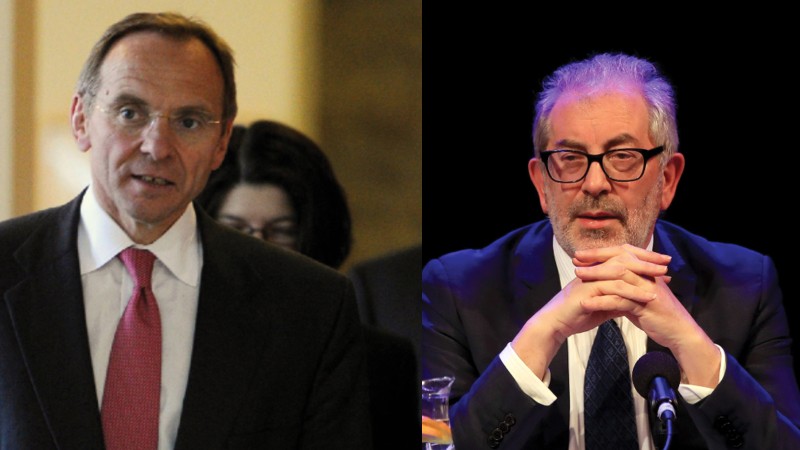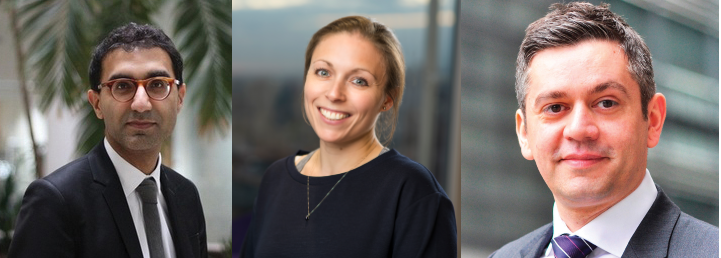Like painting the Forth Bridge, civil service reform is a never-ending process, but that doesn’t mean we can’t stop now and again to take stock of progress and consider what priorities lie ahead. Jim Dunton reports on a webinar looking back on reform over the last ten years
Ten years ago public services reform and dealing with the aftereffects of the global financial crisis were major areas of focus for David Cameron’s coalition government. Then events repeated their nasty habit of getting in the way, most notably in the form of Brexit and Covid-19.
CSW recently brought together a panel of experts to offer lessons from what has turned out to be a tumultuous decade. Among them were former head of the civil service Lord Bob Kerslake, his successor Sir John Manzoni – who served as civil service chief executive and Cabinet Office permanent secretary until April 2020, and Emran Mian, director general for decentralisation and growth at the Department for Levelling Up, Housing and Communities.
Joining them were Charlotte Pickles, director of public service focused think tank Reform and Ed Roddis, public sector research director at consultancy Deloitte. The panel drew on 10 years of Deloitte and Reform’s State of the State report that provides an annual commentary on government and public services.
Back in 2012, implementing the most drastic scaling back of the civil service headcount in living memory was a major agenda item for Kerslake. However, cuts to numbers driven by then Cabinet Office minister Francis Maude were effectively reversed by the demands of responding to the EU referendum result and then the coronavirus pandemic.
Kerslake, who was perm sec at the Department for Communities and Local Government in 2012, said the headcount reductions were “quite a painful process for most of the civil service”, with a near one-in-five shrinkage across government. Some departments saw numbers fall by a third.
He said that the positive lessons he took from the process included being “very honest about the scale of change and not trying to hide it from staff”; introducing processes that have pace but also give staff clarity on where they stand, and being “demonstrably fair”.
Kerslake’s words may be useful for recently appointed Cabinet Office minister for government efficiency Jacob Rees-Mogg, who wants to see post-2015 increases in civil service headcount reversed, which would lead to a reduction of more than 65,000.
But Kerslake questioned whether the current government has a proper understanding of what the correct size and shape of the civil service should be.
“I’m not sure that we got to the right number in the post-austerity period,” he said. “We were down to just over 380,000. That was the lowest number since the Second World War.
 “When we’ve seen growth in recent years it’s been for very specific reasons. Those rises came for a reason and the question is: ‘Has that reason gone away?’ And I’m not sure it has.”
“When we’ve seen growth in recent years it’s been for very specific reasons. Those rises came for a reason and the question is: ‘Has that reason gone away?’ And I’m not sure it has.”
Manzoni, who is now chair of both power firm SSE and Ministry of Defence arm’s-length body the Atomic Weapons Establishment, said he firmly believed in the potential for headcount reductions to drive efficiency and boost effectiveness.
But he warned such tactics would only be successful where organisations already had the capability to deliver what was required of them, otherwise they would “simply make the situation worse”.
Manzoni said government still lacked systematic delivery capability – “what it takes to get stuff done” – and didn’t have the capacity to roll out the ideas contained within the grand, but well-considered, policy documents routinely produced by departments, such as the levelling up white paper and the net-zero 10-point plan.
“The real question is what does it take to deliver what’s in those documents, not how good the documents are,” he said. “[It’s] where we fall down time and time again, and it’s because it takes systemic delivery capability: it’s the human and organisational capability that is focused on delivering the outcome.”
Manzoni said the civil service needed more people at the top with both public and private sector experience, and that he regretted not putting more structures in place to make that happen.
He also urged ministers to prioritise a realistic number of issues during any term – suggesting five “big” priorities as potentially achievable.
“We saw it in the Olympic Delivery Authority, we saw it in Brexit, we saw it in Covid,” Manzoni said. “When the government aligns around a priority, it can work at lightning speed with enormous effect. But until it does, it doesn’t work nearly at all. No organisation can have 550 priorities.”
On the topic of driving public sector change, both Manzoni and Reform director Pickles made the point that major events – like Brexit and Covid – routinely push plans onto the back burner.

Pickles said that while lots of changes had been made over the past decade that put the UK in a better position, her answer to the exam question “Has the UK done public sector reform?” would be “not really”.
She said the nation’s major-event responses had been delivered at a cost to business-as-normal services and long-term planning when all areas were in need of attention. Pickles argued that as the nation faced increased challenges in the coming years, including heightened global tensions, cyber warfare, extreme weather events and demographic shifts, the pressures experienced during the past decade should be seen as “normal”.
“The greatest challenge in my mind that is facing both the country, the state and those who work in the public sector is how on earth we carve out the time and the space to do the genuine long-term thinking. And do we have the right people, the right talent, and the right skills and the right capabilities to do that in government?” she asked.
“From where I’m sitting right now I’m not particularly positive on that. And yet unless we solve those huge issues, we will continue to be firefighting, and being buffeted by all those massive challenges that we can see coming down the line.”
DLUHC’s Mian was more upbeat on the ability of major events to drive positive change in government, particularly when it came to elements of the pandemic response.
“I think we’ve made some breakthroughs in how we make decisions,” he said. “We’ve been able to make decisions at pace, while still doing so in a structured way, considering the things that ought to be considered as part of public sector decision making.”
Mian said the pandemic had also accelerated change in relation to cross-departmental collaboration.
“Silos across different bits of the public sector are less visible in a crisis, and they’re less visible on a screen when that’s the way you’re interacting,” he said.
“We’ve realised that not all of your key decision-makers need to be in the same room in London. And it’s perfectly fine if some of your decision-makers are elsewhere in the country. And, indeed, that will be better because we’ll know more and we’ll have greater insight across the UK.”
Mian said there was “really good evidence” that departments are holding on to some of the organisational lessons from the pandemic. He cited data architecture as an area where key people were now being deployed to other government priorities.
Deloitte’s Roddis is responsible for putting together the consultancy’s annual State of the State report – which brings together data on citizens’ attitudes to government and insight from public sector leaders, including permanent secretaries and other senior civil servants.
He said the demands of austerity, Brexit and the pandemic had been “a staggering series of disruptions”, but ones which had also seen leaders report spikes in innovation and surges of change.
Perhaps most tellingly for civil service resourcing and reform, however, is a significant shift in attitudes to public spending on services.
“During the austerity years, six in 10 of the public consistently said we should have higher levels of public spending, even if that meant higher levels of tax,” Roddis said.
“Last year our survey showed that has changed substantially. Just three in 10 of the public were saying we should have higher levels of public spending.”
How such a shift back to lower spending on public services would be compatible with the arrival of extreme, unforeseen events which, as Pickles pointed out, should now be regarded as the new normal – along with all the usual wicked problems that the UK government has to tackle – remains to be seen.
Deloitte and Reform’s latest State of the State report is available online